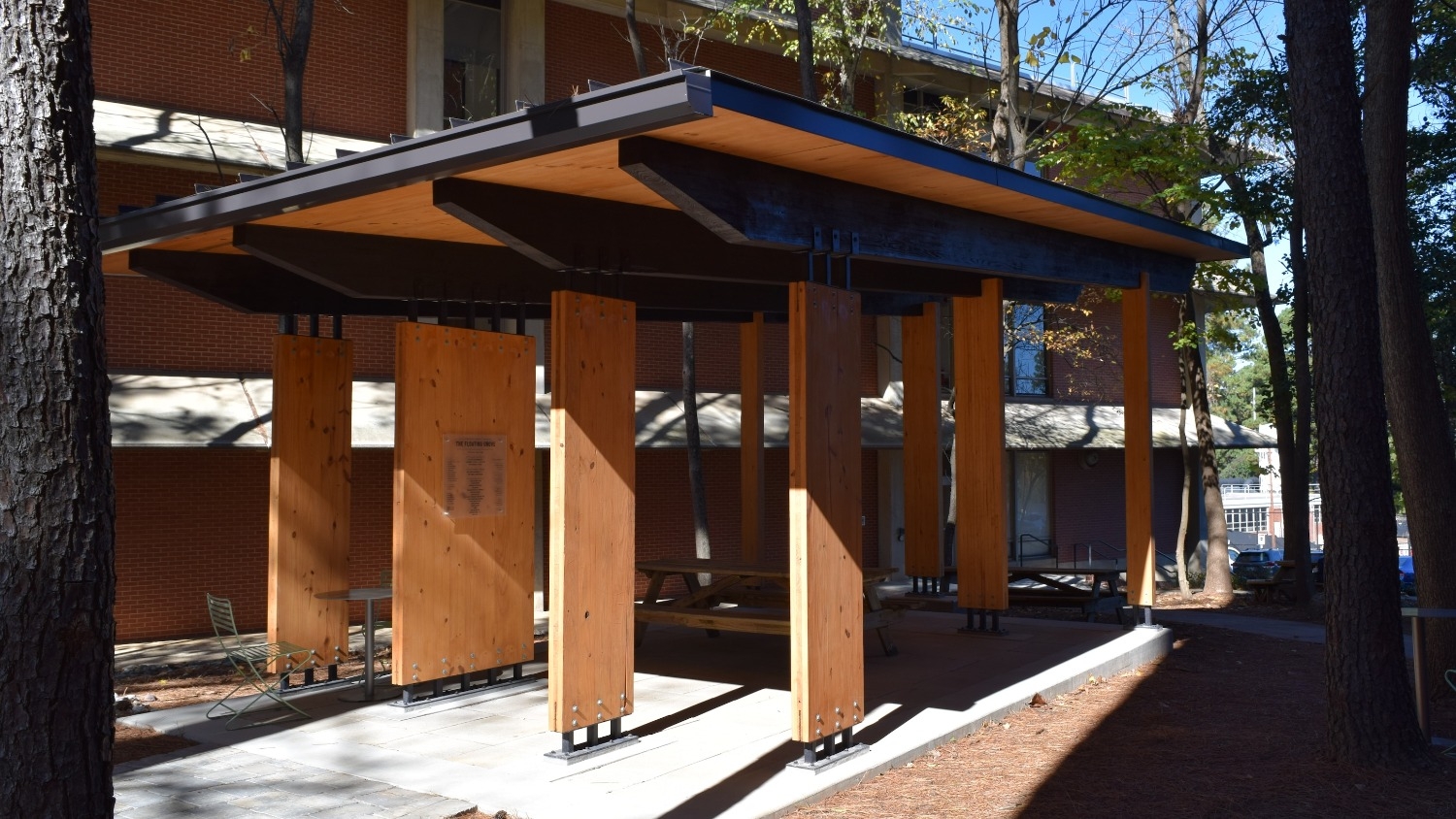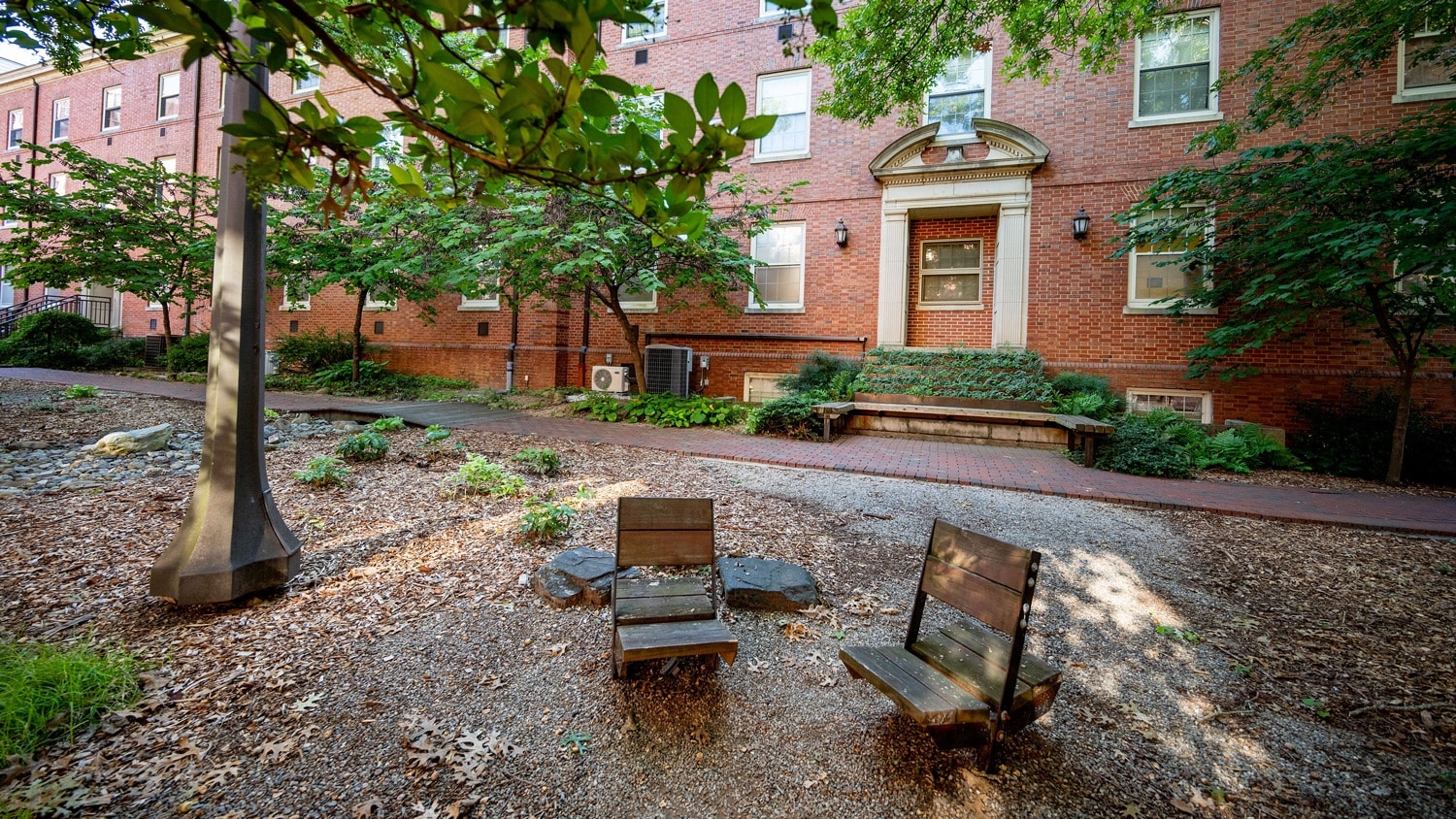Exploring Coastal Conservation: Students and Faculty Win ASLA Awards to Preserve NC

Three submissions were selected for Honor Awards as part of the 2020 American Society of Landscape Architects (ASLA) Professional and Student Awards.
Professional Awards:
Lumberton Community Floodprint received an Honor Award in the Analysis and Planning category as part of the 2020 ASLA Professional Awards.
Chosen from 567 submissions, this year’s 31 Professional Award winners represent the best of landscape architecture in the General Design, Urban Design, Residential Design, Analysis & Planning, Communications, and Research categories. In addition, a single Landmark Award is presented each year.
Lumberton County Floodprint: Strategies for Repurposing Vulnerable Landscapes After Disaster
Authored by the Coastal Dynamics Design Lab
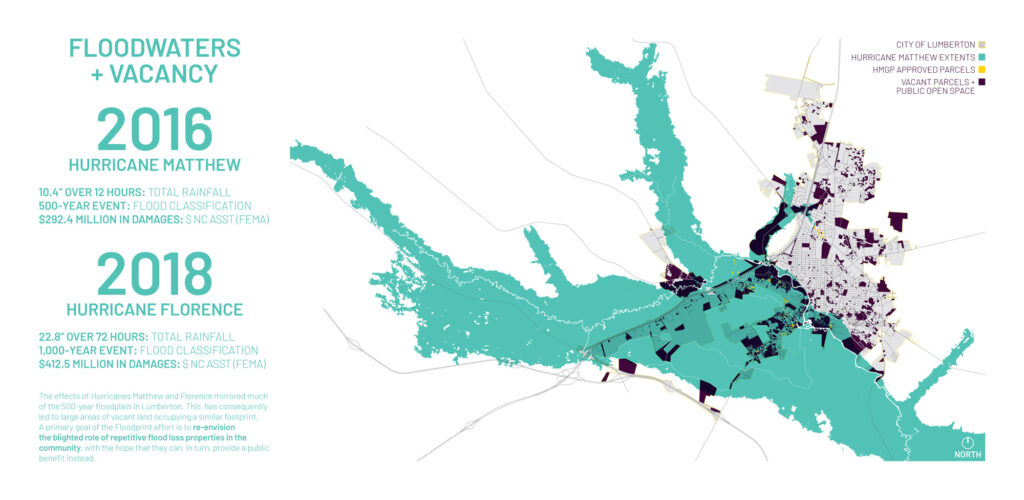
The Lumberton Community Floodprint addresses the devastation Hurricanes Matthew and Florence caused to the City of Lumberton, NC. The project introduces the concept of a “floodprint” — an innovative landscape planning approach guided by water-land relationships, including the powerful forces of flooding, recovery and equity. The hyper-local Floodprint process uses landscape analyses and planning strategies to address: hazard mitigation and disaster recovery; social vulnerability; land and water conservation; policy, administration and finance; and natural resource management practices. Project outcomes create opportunities for Lumberton to transform its vacant parcels into places for water storage, habitat and recreation. The plan connects 806 acres and provides 8.5 miles of trails into a unified, community-wide greenway, of which 99% resides within the 100-year floodplain. Associated sub-area plans propose short-, mid- and long-range improvement projects and management strategies. The processes and outcomes enabled through the Floodprint process continue to increase social and physical resilience in the city, specifically through actionable and scalable land-use strategies that reduce risk while simultaneously improving public safety and long-term environmental function within historically flood-prone neighborhoods.
Project Credits
- Andrew Fox, FASLA, PLA, Principal Investigator/Project Lead
- Travis Klondike, Associate ASLA, Co-Principal Investigator/Project Manager
- Kofi Boone, ASLA, Co-Principal Investigator
- Tania Allen, Co-Principal Investigator/Graphic Design
- M. Brandon Love, AIA, City of Lumberton Deputy City Manager
- Sara Queen, AIA, Co-Principal Investigator/Architecture
- Robby Layton, PhD, FASLA, PLA, CPRP, Consulting Advisor/Parks and Recreation Management
- Teresa Penbrooke, PhD, MAOM, CPRE, Consulting Advisor/Parks and Recreation Management
- Barbara Doll, PhD, PE, Co-Principal Investigator/Hydraulic Engineering
- Jack Kurki-Fox, PhD, Co-Principal Investigator/Hydraulic Engineering
- Madalyn Baldwin, Student ASLA, Graduate Research Assistant
- Benjamin Jones, Student ASLA, Graduate Research Assistant
- Brenna Laffey, Student ASLA, Graduate Research Assistant
- Joshua Basham, Graduate Research Assistant
- Kirsten Benson, Graduate Research Assistant
- Leslie Ann Jackson, Vice President of Community Investment & Engagement, North Carolina Community Foundation
Student Awards:
Peat/Land: Strategies for Restoration, Design, and Planning of North Carolina Peatlands received an Honor Award in the Analysis and Planning category as part of the 2020 ASLA Student Awards. Sound Design: Reconnecting the Coastal Edge received an Honor Award in the General Design category as part of the 2020 ASLA Student Awards.
Chosen from 560 submissions, this year’s 35 Student Award winners represent a bright and more inclusive future of the landscape architecture profession in the General Design, Urban Design, Residential Design, Analysis & Planning, Research, Communications, Student Collaboration, and Student Community Service categories.
Peat/Land: Strategies for Restoration, Design, and Planning of North Carolina Peatlands
Authored by Madalyn Baldwin (MLA 2019), Advisor of Record: Andy Fox
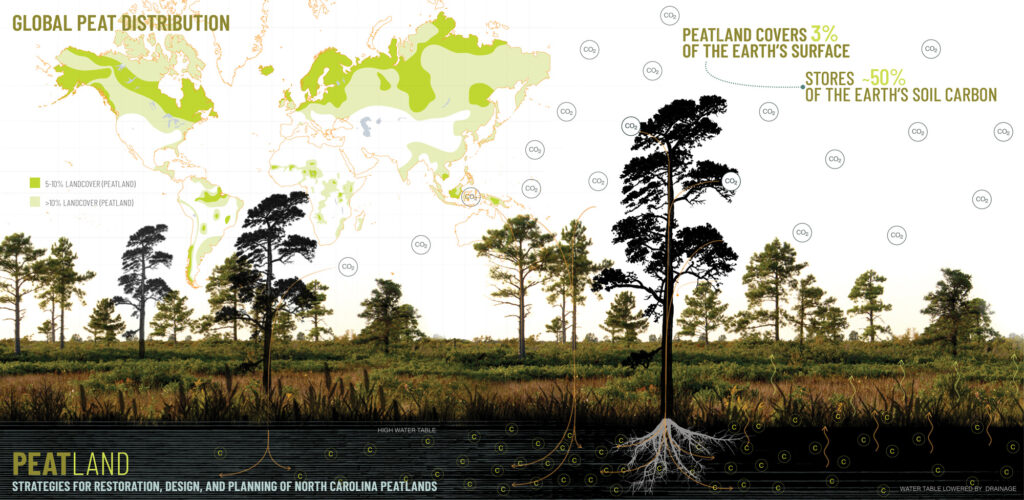
This project explored the unique ecological, historical, and cultural role of peatland in North Carolina, and examined restoration and design strategies for these sensitive landscapes. Peatland is a unique type of wetland that produces peat through the partial decomposition of plants and other organic matter. Globally, peatland covers less than 3% of the earth’s surface, but stores close to 50% of the world’s soil carbon. Peatland conservation and restoration aligns with global priorities for climate adaptation, hazard mitigation, biodiversity conservation, and rural economic development, and landscape architects working in peatland contexts are positioned to lead these regenerative design efforts. This project identified three peatland contexts in NC for the implementation of restoration and design strategies: i) public access to conserved peatlands; ii) restoration of peatland drained for agriculture; iii) resilience and adaptation of rural towns built in and around peatlands.
Sound Design: Reconnecting the Coastal Edge
Authored by Xinyu Li (MLA candidate 2020) and Xinyi Liu (MLA 2020) as part of the LAR 507/ARC 503: Coastal Dynamics Studio, faculty of record: Andy Fox and David Hill.
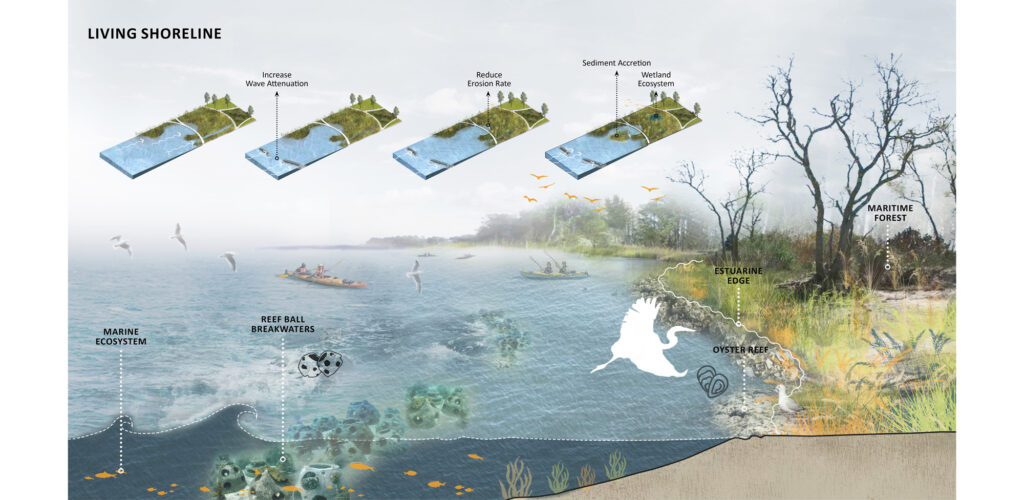
The Sound Design project proposes a new civic space for the Town of Nags Head, North Carolina. Nags Head is a coastal community located on the Outer Banks, which situates it as a premier location replete with beautiful and rich natural resources. These characteristics make it an attractive place to live, work and visit. The project is organized around three main issues: environment, economy, and well-being. Using these foci, the project aims to promote a coastal lifestyle that preserves coastal heritage while reducing the impacts of climate change through the use of adaptive, sustainable and connective strategies. The primary design elements include: shoreline management, multi-functional open spaces, and a publicly accessible sound-side circulation system that fulfills the needs of the community while reconnecting the critical ecologies along the coastal edge. The goal of this proposal is to create a model landscape for future soundside planning.
Project Credits
- Project collaborator – Shuang Wu
- Project collaborator – Rajvee Patel
- Project collaborator – Keval Amin
- Project advisor – David Hill, FAIA
- Project advisor – Ranji Ranjithan, PhD
- Project advisor – Madalyn Baldwin, Associate ASLA
- Project advisor – Travis Klondike, ASLA
